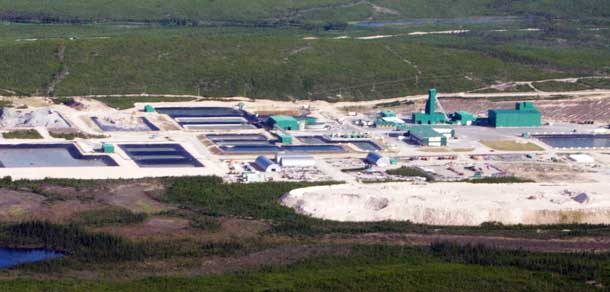Environment and Sustainability Committee
CAMERON S. MCNAUGHTON, PH.D., P.ENG., DAVID J. PARKER, ENGINEER-IN-TRAINING, AND GORDON A. SPARKS, P.ENG.
Opinions expressed do not necessarily reflect the views or policies of APEGS.
The topic of nuclear power brings up conflicting and sometimes confusing statements between proponents and critics. Proponents claim: “Nuclear power produces no greenhouse gas emissions.” Critics claim: “Mining of uranium produces greenhouse gases that are ignored.” The truth lies somewhere in between.
In 2013, Dr. Gordon Sparks (Professor Emeritus, University of Saskatchewan) and Dr. Cameron McNaughton were awarded a grant from the Sylvia Fedoruk Canadian Centre for Nuclear Innovation. Our goal was to use ISO (International Organization for Standardization) methods to perform a comprehensive life cycle assessment of greenhouse gas (GHG) emissions from the mining and milling of uranium in Saskatchewan. Graduate student David Parker (now with Saskatchewan Research Council) was enlisted to perform the analysis, and results were published in August 2016 in Environmental Science and Technology.
Between 2006 and 2013, AREVA Resources Canada and Cameco Corporation produced approximately 19 per cent of the global uranium supply. Our theory was that, in spite of the difficulty of mining in the north, Canadian uranium was being produced with the lowest GHG emissions intensity in the world. In testing this hypothesis, we had the benefit of 32 years of data provided by AREVA and Cameco, covering three separate mine-mill pairs that operated between 1995 and 2013.
Our study was comprehensive, considering both direct and indirect emissions of GHGs. Direct emissions include those from the combustion of propane and diesel for heating and production of electricity. Indirect emissions occur due to electricity consumption, from transportation of materials and people to the sites, and are embodied in materials.
Our results show direct emissions account for approximately 30 per cent of the total GHG emissions. Emissions embodied in electricity account for 30 to 45 per cent of the total, while other indirect emissions constitute the remainder. We even drilled down to look at activities at corporate headquarters in Saskatoon and emissions due to land use change, although emissions from those sources were found to be almost negligible.
As expected, we confirmed that GHG emissions intensity decreases as ore grade increases. While that is useful information, we still needed to examine how the emissions from mining and milling fit into the emissions of the entire nuclear energy life-cycle emissions. To perform this comparison, GHG emissions per kilogram of yellowcake were converted to GHG emissions per kilowatt hour of electricity.
Using a conversion factor for American light-water reactors, we found that mining and milling contributes 1.1 g CO2e/kWh. The median emissions estimate for the entire nuclear life cycle is 12 g CO2e/kWh with the range of estimates between 7 and 25 g CO2e/kWh.
Our study shows mining and milling of Canadian uranium makes up less than 10 per cent of the GHG emissions of the entire nuclear life cycle. It also supports claims that nuclear power is comparable to renewables in terms of GHG emissions per unit of electrical energy. Solar, for example, has a higher life-cycle emissions profile with a median value of 44 g CO2e/kWh and a range of 37 to 50 g CO2e/kWh. Wind power is comparable to nuclear power with a median of 11 g CO2e/kWh and a range of 9 to 18 g CO2e/kWh.
Ore now being mined at Cigar Lake and converted into yellowcake at McClean Lake has comparable or higher grades than the uranium produced in Saskatchewan between 1995 and 2013. As a result, we predict Canadian uranium will continue to be produced at a very low emissions intensity. Whether Canadian uranium is being produced at the lowest emissions intensity will need to wait until other studies of similar depth and rigour are completed for mines and mills operating in jurisdictions outside of Canada. But the prognosis looks good.
To read the original study in more detail, check it out online at http://pubs.acs.org/doi/pdf/10.1021/acs.est.5b06072
